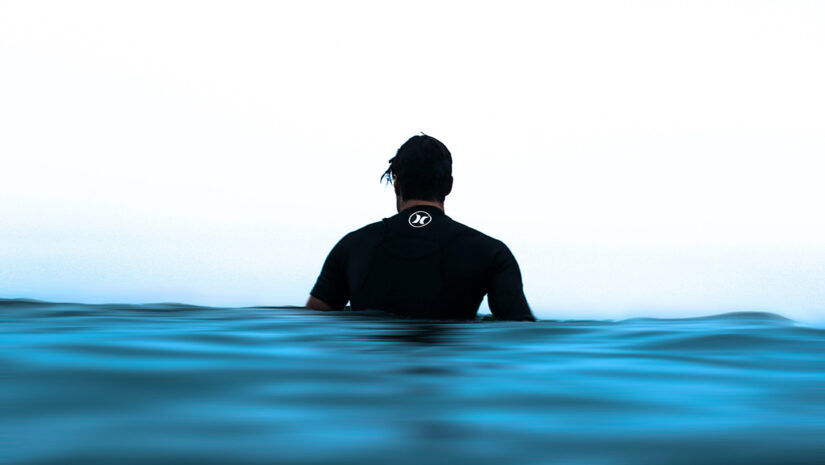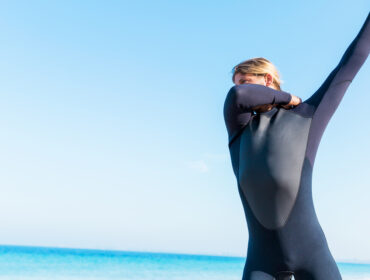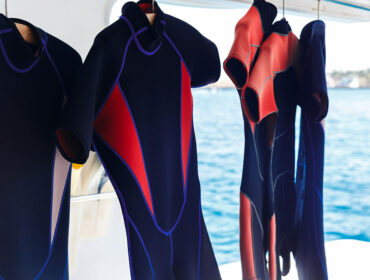Whether you’re a surfer, kiteboarder, stand-up-paddle boarder, or scuba diver, maintaining a safe and comfortable body temperature is a top priority. Cold water and windchill can be a deadly combination without the right equipment. If you’re experienced with watersports in colder water, you know that wetsuit thickness, air temperature, and water temperature are all deeply interrelated. To help you find the right wetsuit for your next aquatic adventure, we’ve assembled this helpful wetsuit thickness and temperature guide.
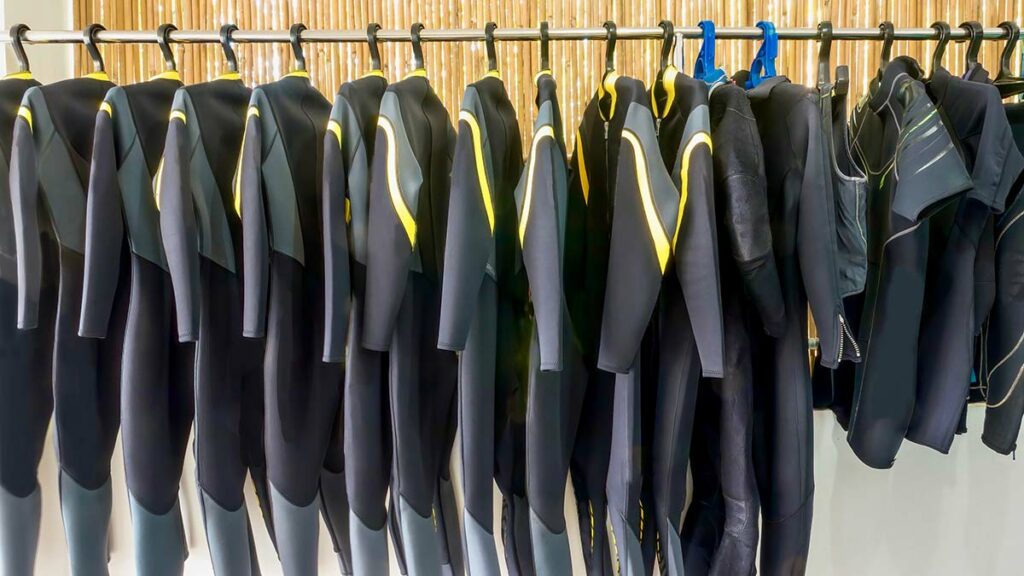
The Different Types of Wetsuits
Wetsuit Styles
The main wetsuit styles are the full-body wetsuit, the shorty, and the Farmer John or Farmer Jane wetsuit.
Full-Body Wetsuit
Also known as the full wetsuit, the full-body wetsuit has sleeves that reach up to the wrists and pant legs that reach up to the ankles. These scuba suits offer better protection and thermal insulation as they cover most of the body. As a result, this suit is preferred by divers who engage in cold-water diving.
Shorty Wetsuit
A shorty wetsuit, as the name suggests, has short sleeves and pant legs that end just above the knee. Many divers prefer shorties as they allow greater flexibility underwater. They are also easier to don and off compared to full-body wetsuits. On the other hand, shorties don’t offer the same level of protection as their full-body counterparts and provide the least amount of thermal insulation. This makes it ideally suited to warm water diving.
Farmer John/Farmer Jane Wetsuit
Another option is the Farmer John or Jane wetsuit. This two-piece suit consists of a sleeveless full-length piece that is worn with a covering jacket. Similar to the full wetsuit, the Farmer John or Jane is desirable for cold-water diving. Since this wetsuit is composed of two pieces, there is a double-layering at the diver’s torso. This double-layering creates extra insulation around the trunk, which helps keep the diver’s limbs warm. The Farmer John and Farmer Jane are also available in the shorty style.
Factors that Influence Water Temperature
Water temperature varies greatly depending on the location, season, depth, and currents. Tropical waters often boast temperatures above 80°F (27°C), while temperate waters range from 70-80°F (21-27°C). Cooler waters can be found in the 60-70°F (15-21°C) range, and cold waters dip below 60°F (15°C). Being aware of these factors will aid you in selecting the appropriate wetsuit thickness.
Things to Remember About Wetsuit Thickness
Thicker wetsuits protect you from cold water by helping you retain body heat, but the thickest wetsuits can also lead to premature fatigue and loss of dexterity in the water. Finding the right wetsuit for your needs demands considerations for comfort, flexibility, and dexterity in addition to warmth.
The different thickness of neoprene and other materials can provide a variety of benefits, including extra warmth and protection from abrasion.
Accessories also make a big difference. The coldest water requires not just a thick wetsuit but the use of wetsuit boots or booties, wetsuit gloves, and a wetsuit hood to protect your body from head to toe.
Neoprene thickness is measured in millimeters. Many wetsuits show two measurements. The first number represents torso thickness and the second represents leg and arm thickness. Torso neoprene will generally be thicker than the material used for leg and arm coverage.
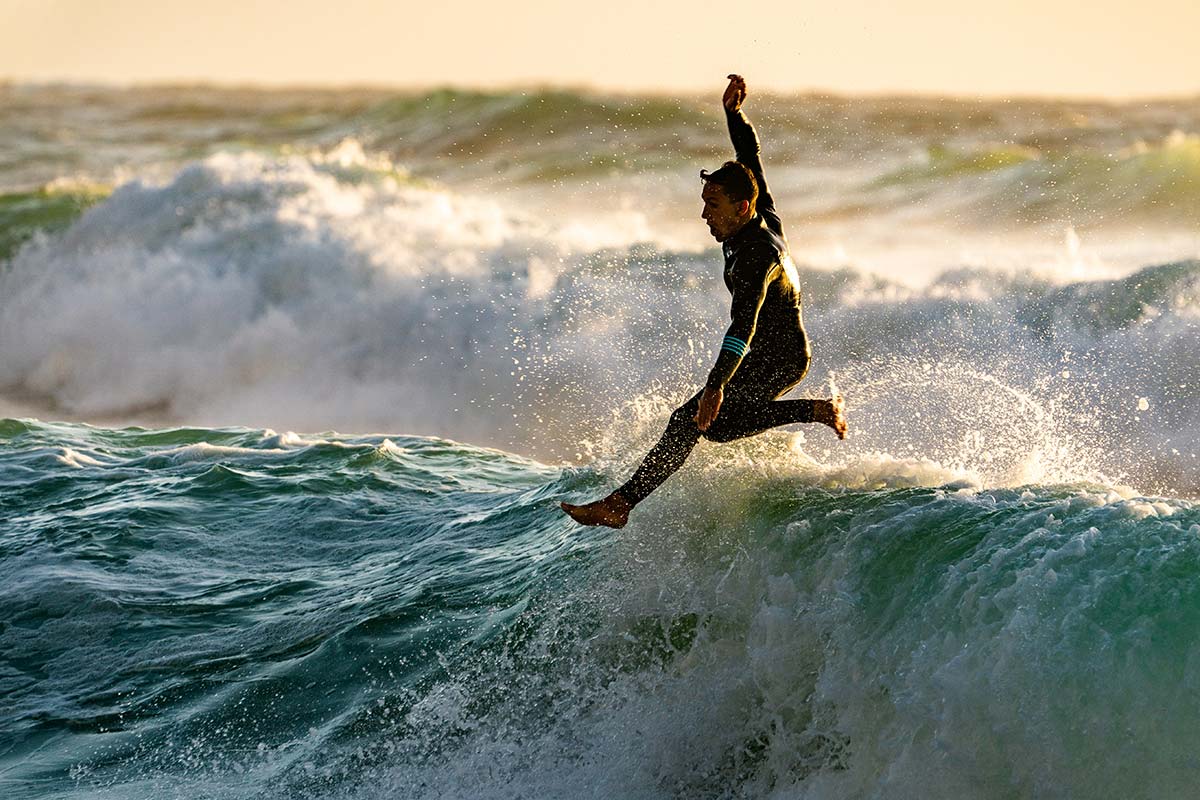
Wetsuit Thickness Guide: Choose Different Types of Wetsuits Based on Activity
The ideal wetsuit thicknesses vary based not only on water and air temperature but also on activity. Scuba diving has different requirements than SUPing because you’re constantly submerged. Surfing involves being in and out of the water, so wind is less of a concern than water temp.
Scuba Diving Wetsuits
| Water Temperature | Scuba Diving Wetsuit Thickness |
| Over 82.4°F | A bathing suit or rashguard, or UV protective dive skin are sufficient |
| 77°F – 80.6°F | 2mm shorty wetsuit or 1mm full suit |
| 71.6°F – 75.2°F | 3mm full suit |
| 62.6°F – 69.8°F | 5mm full suit |
| 50°F – 60.8°F | 7mm full suit or 8/7mm semi dry suit |
| 41°F – 50°F | 8/7mm semi dry suit or dry suit |
| Under 41°F | Dry suit |
Surfing Wetsuits
Depending on air and water temperature, many surfers prefer short sleeve wetsuits over full wetsuits.
| Water Temperature | Surfing Wetsuit Thickness |
| Over 75°F | A bathing suit or rashguard are sufficient |
| 71.6°F – 75.2°F | 1mm or 2mm neoprene shirt |
| 66.2°F – 71.6°F | 2mm shorty wetsuit or springsuit |
| 62.6°F – 68°F | 2mm full suit |
| 55.4°F – 65.4°F | 2mm full suit or 3/2mm full suit |
| 50°F – 57.2°F | 4/3mm full suit, 3mm booties, 2-3mm gloves, wetsuit hood if desired |
| 46.4°F – 53.6°F | 5/4mm full suit with hood, 5mm booties, 5mm gloves |
| Under 46.4°F | 6/5mm or 6/4mm full suit with hood, 7mm booties, 7mm gloves |
Above the Water Wetsuits
For water sports like kitesurfing, SUP, and windsurfing, you’ll be above the water’s surface most of the time.
| Water Temperature | Watersports Wetsuit Thickness |
| Over 77°F | A bathing suit or rashguard are sufficient |
| 71.6°F – 75.2°F | 2mm neoprene shirt or shorty wetsuit |
| 66.2°F – 73.4°F | 2mm springsuit or 3/2mm full suit |
| 59°F – 68°F | 3/2mm full suit |
| 53.6°F – 59°F | 4/3mm or 5/3mm full suit, 3mm booties, 2-3mm gloves, wetsuit hood if desired |
| 44.6°F – 55.4°F | 5/4mm or 6/4mm full suit with hood, 5mm booties, 5mm gloves |
| Under 46.4°F | 6/5mm or 6/4mm full suit with hood, 7mm booties, 7mm gloves |
Other Variables to Consider
These are the basic guidelines for suit thickness depending on water temperature and activity. If you’re going on an excursion with a tour company or tour provider, they may offer specific recommendations based on their experience.
If you know you have a lower tolerance for cold than these charts suggest, you can always add additional layers under a dry suit. You can also add a hood, booties, or gloves for extra warmth!
Additional Tips for Temperature Regulation
Aside from choosing the appropriate wetsuit thickness, there are other ways to enhance temperature regulation:
- Ensure your wetsuit fits snugly to minimize water exchange.
- Invest in quality wetsuit accessories like hoods, gloves, and booties.
- Stay hydrated and nourished before and after your dives to maintain body heat.
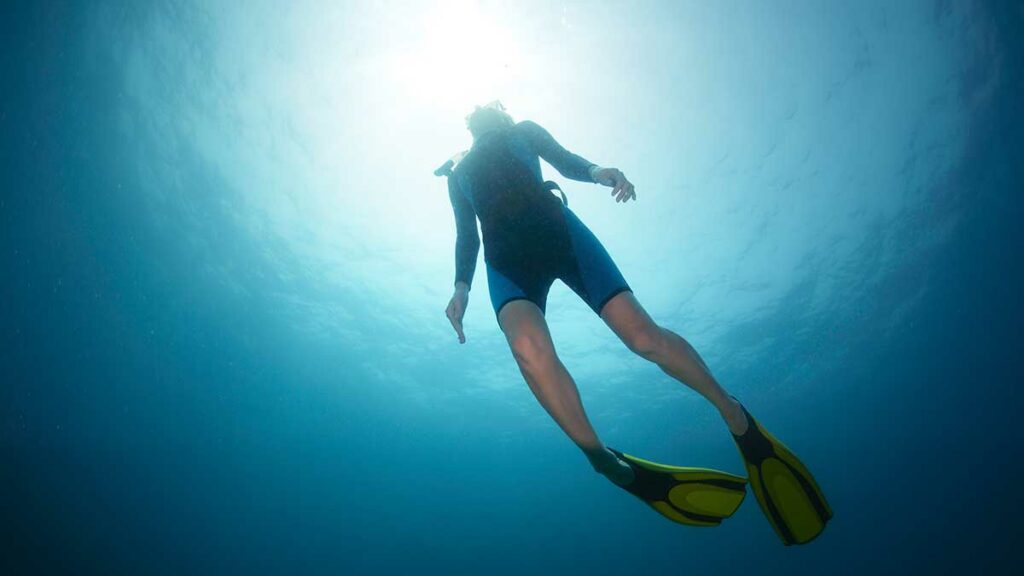
Wetsuit Fit
Your wetsuit must be a perfect fit for your body because its efficiency will depend on the fit. This is why it’s important to try on wetsuits before you buy them. While it can be frustrating and time-consuming to try on different wetsuits (as trying them on is not always easy), you should never skip this step or you will end up with a non-usable wetsuit.
Since you will be wearing your wetsuit when it is dry, signs of the right fit include mild struggling and even a little huffing and puffing while attempting to put it on. Scuba diving wetsuits should feel snug and your movements should be slightly restricted. These qualities all indicate the right fit.
If you can don the wetsuit too quickly, then it is too big for you. It should not be too loose either because that would allow water to flow freely through it. If that happens, the wetsuit’s purpose is defeated. Neither should there be massive gaps in the underarm or crotch area, though a small space at the back is allowable.
On the other hand, the wetsuit shouldn’t be so tight that it cuts off circulation at your wrists and ankles. Unusually tight scuba suits may cause life-threatening conditions. Additionally, if you cannot bend your knees while wearing the suit, then it is too compact for you.
No matter how time-consuming it is to try on different wetsuits, it is worth your time and effort. By properly checking for fit, you will stay warm and comfortable during your dives. There is nothing that can ruin a dive faster than being ice cold underwater, so get it right the first time when you go shopping.
Maintaining Your Wetsuit
To ensure your wetsuit lasts for many dives to come, practice proper maintenance:
- Rinse your wetsuit with fresh water after each dive to remove salt and debris.
- Hang your wetsuit to dry in a shaded area, avoiding direct sunlight.
- Regularly inspect your wetsuit for tears and signs of wear, repairing or replacing as needed.
Conclusion
Choosing the right wetsuit thickness is essential for a comfortable and safe scuba diving experience. By matching the wetsuit to the water temperature, you can stay warm, protect your body, and fully enjoy your underwater adventures. Remember to respect the environment and practice responsible diving to preserve the beauty of the oceans for future generations of divers. Stay warm, stay safe, and dive on!

